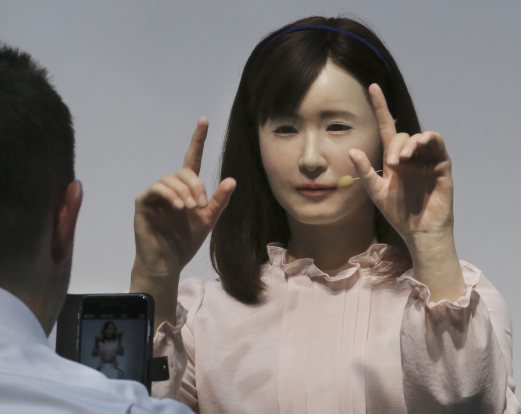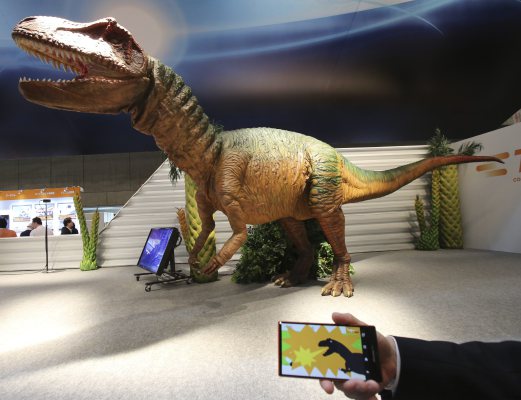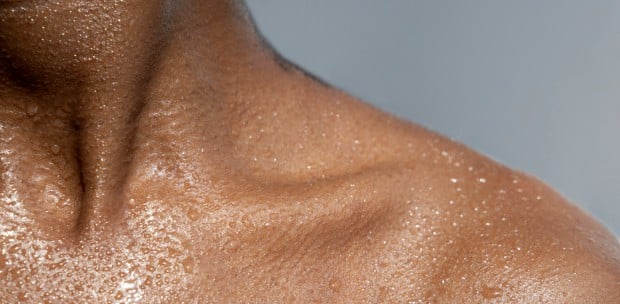CHIBA: Glasses that tell you how to get home, adverts that know where you are looking and a T-shirt that knows how fast your heart is beating were on display at a huge tech gathering in Japan today.
The gadgets were all part of this year’s Cutting-Edge IT & Electronics Comprehensive Exhibition (CEATEC), Asia’s largest electronics fair, just outside Tokyo.
Leading the pack was a tiny projection device that can be attached to a pair of glasses to give the wearer an ever-visible screen.
The prototype – dubbed Toshiba Glass and weighing 42 grammes (less than 1.5 oz) – might offer directions or a simultaneous translation, or could assist factory workers who need both hands free while working, a Toshiba researcher said.
“We still don’t know what wearable formats will be the most accepted in the future,” said Toshiba senior research scientist Yoshiyuki Kokojima.
“Constantly seeing a small screen may get tiring to the eyes, but you could get information without even lifting a finger. It’s less effort than consulting a wrist watch.”
Leading mobile carrier NTT Docomo was showcasing a T-shirt that uses a special textile to keep track of the wearer’s pulse.
The data is transmitted to a smartphone, which must run a specific app, the company said.
While Docomo’s offering might have concentrated on health, Fujitsu unveiled something to encourage a bit more relaxation, in the form of a device that could help a barman read his customers’ minds.
Small sensors in a bar track where a drinker is looking and automatically offer information on screens about that bottle of expensive wine he keeps gazing at – such as where it comes from and what year it is.
“This could be one way of marketing in the future,” said Fujitsu spokesman Naoki Mishiro.
NTT Docomo’s Yubi Navi might prove useful for customers struggling to find their way home after a night at such an accommodating bar.
Billed as “just like holding someone’s hand”, the small rubber cuboid fits snugly in the palm and buzzes or vibrates to guide the user through unfamiliar streets.
The kit offers freedom from the tyranny of having to keep your eyes glued to a smartphone for directions, the company said.
After a user types in the intended address on their connected phone, the device takes over, nudging left or right until the destination hoves into view.
Its inventors say the Yubi Navi also offers a way to communicate with someone who is far away, effectively “squeezing” their hand by activating your own device.
“Touch sensation can create a new type of gadget for the future,” an NTT Docomo presenter said.
Nearly 550 companies are taking part in the trade show, which has gathered foreign exhibitors from 24 countries and territories.
The show runs until Saturday.
-- AFP







